For many years, relations between Tajikistan and Uzbekistan have been fraught with tension. Some analysts even dubbed the ties between the two countries a Central Asian ‘cold war’. But luckily, things are slowly improving. The return of the Tashkent-Dushanbe night train is a testament to this bilateral thaw. The new rail service connecting both capitals is, in many ways, a miniature of the past, present, and future of Uzbek-Tajik relations.
“Your phone, please”, one officer demands. As the only man in the kupe, a train compartment, the border guards summoned me into the corridor. Reluctantly I let the officer scroll through the pictures I took during my brief visit to Uzbekistan. Pornography, photos of government buildings, military installations – whatever he is looking for, the man finds none.
As he returns my phone, some of his colleagues enter the train to look for contraband and other prohibited items. Luggage is thoroughly searched, as well as the train’s interior. Some ceiling panels are removed and part of the flooring is opened up to examine if anything is hidden underneath.
Despite Uzbek authorities having relaxed customs procedures over the past years, the border crossings with Tajikistan remain an uncomfortable exception. But relations between the two countries have improved significantly over the past few years. Travelling aboard the direct Tashkent-Dushanbe night train shows the slow fruition of this regional detente.
15:47 – Tashkent
Some thirteen hours earlier, my travel companion and I boarded the train at Tashkent’s central station. It was mid-May and with temperatures well over thirty degrees Celsius, our kupe was unbearably hot. Although the ticket agent had promised us air-conditioning, the one in our wagon was not working this afternoon. With sweat dripping down my back, a young Tajik mother asked if I could help her store her large suitcase.
Nodira and her toddler son would be our cabin companions for the night, travellig to Dushanbe for a family visit. Although Tajik by birth, Nodira often pendles between Uzbekistan and Tajikistan. Her husband owns a suitcase shop in Tashkent, yet she prefers the tranquil mountains of native Tajikistan over the hustle and bustle of the Uzbek capital. For a time, Nodira thought of running her own business as a professional make-up artist on Instagram, though it was no longer acceptable after becoming a married woman, she tells us.
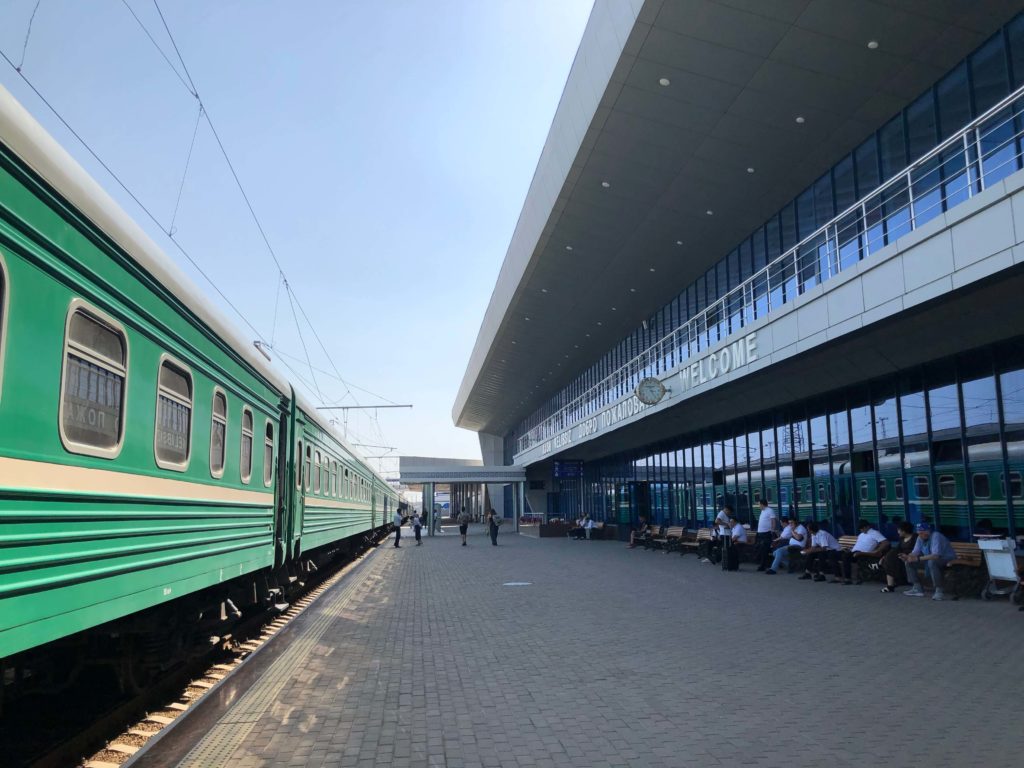
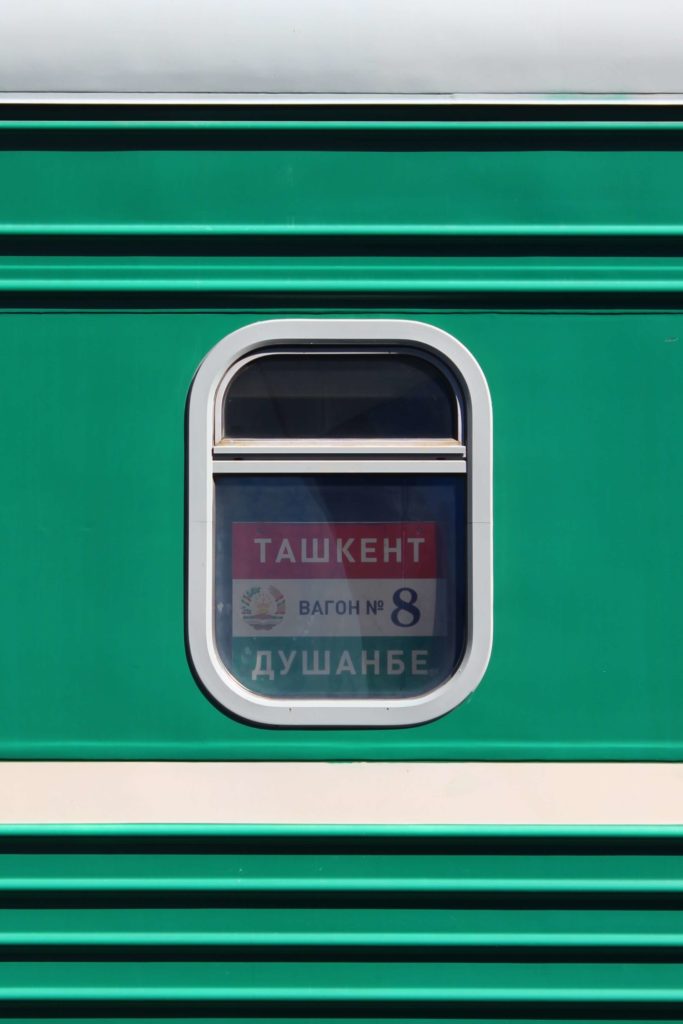
Ever since, Nodira has embraced a more conservative lifestyle, focusing on religion, her three children, and running the household. Tajik society is deeply patriarchal and gender roles remain traditional. However, for Nodira, social media has an important emancipatory function. It helps her learn a little English and connect with the outside world through her followers, mostly in Russian. In fact, she has become quite the influencer since our meeting on the sweltering night train. Thousands of people watch her videos in which she prepares classic Central Asian recipes in her kitchen.
20:40 – Samarkand
Just after sunset, we made a brief call at Samarkand. The city’s magnificent architecture still reflects its historical significance as a leading centre of Persian civilisation. But Samarkand’s legacy is also highly contentious.
For centuries, the Tajik language – a variety of modern Persian – has been Samarkand’s lingua franca. However, this position has come under increasing pressure since Uzbekistan’s independence. Eurasianet writes that former President Islam Karimov seemed intent on erasing the city’s Tajik roots.
Many in Tajikistan, however, still see Samarkand as inextricably linked to their ethnic and cultural identity. The issue of Samarkand dates back to the 1920s when the city was made part of the Uzbek SSR under the Soviets’ policy of national delimitation. In 2009, Tajik President Imomali Rahmon told journalists that in a brawl with Karimov, he had threatened to take back Samarkand by force.
Interestingly, a significant number of Tajik speakers in Uzbekistan hold more nuanced views about their ethnicity. Research about this topic found that “many people speak a language as their vernacular language while identifying themselves with the ‘other’ ethnic group in daily life.” In the same study, Persian-speaking respondents from Samarkand primarily see themselves as Samarkandi, rather than Tajik.
On the other hand, for people like Nodira who are multilingual and have mixed families, local, national, and ethnic identities overlap. The new rail connection also has a significant symbolic function as a token of regional interconnectedness. In many ways, the hard border between Uzbekistan and Tajikistan was a historical anomaly, in that it divided a continuous cultural and linguistic space.
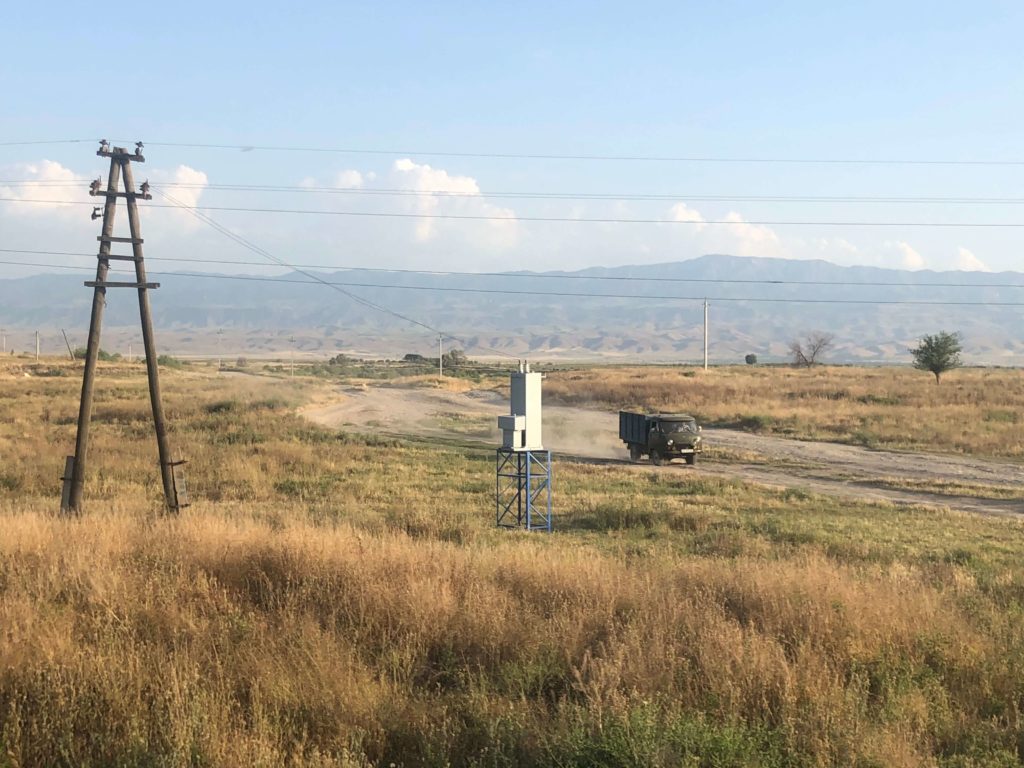
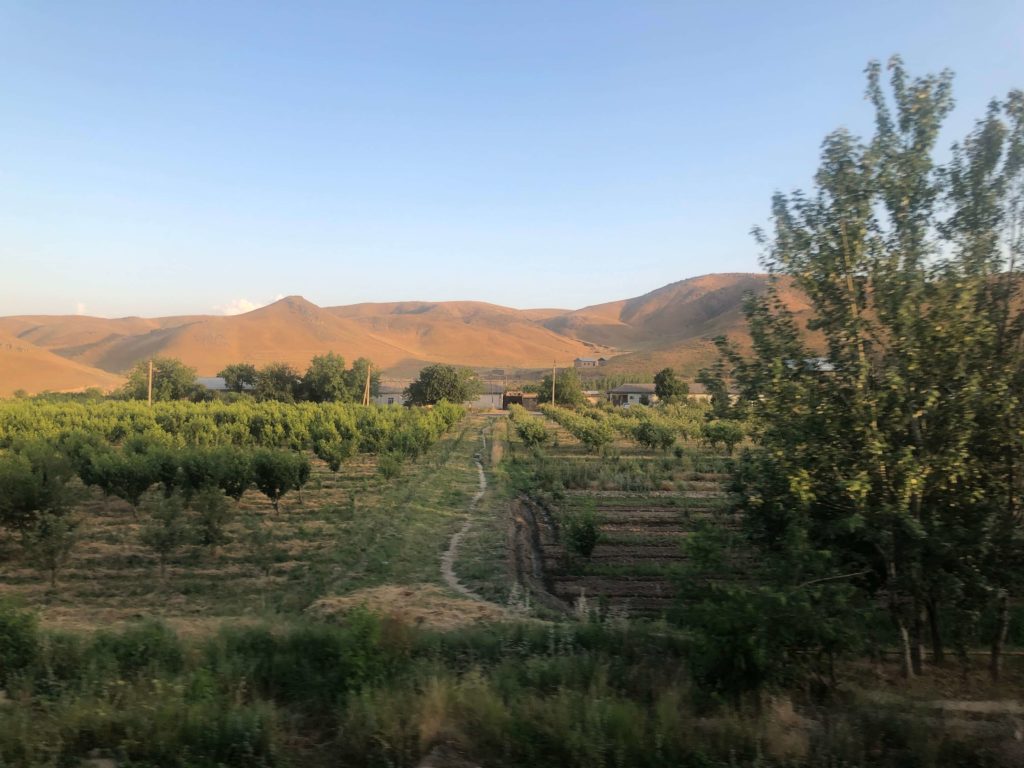
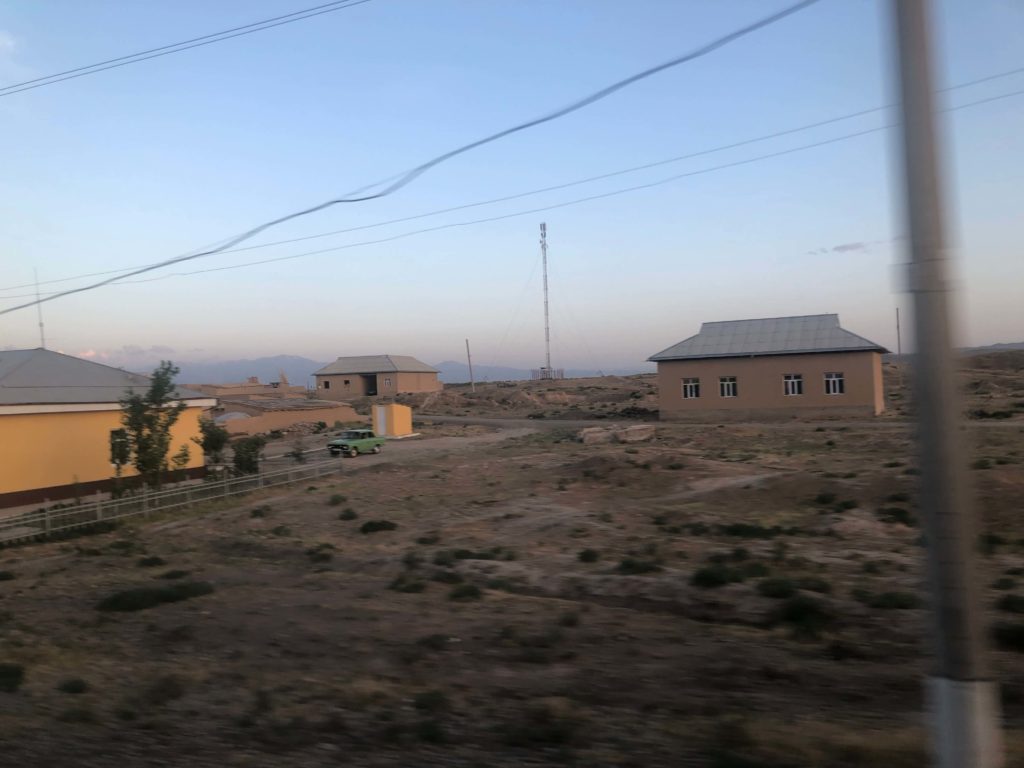
05:53 – Border
After the Uzbek border guard returns my phone and the customs officials exit the train, we ride into no-man’s land. As we accelerate, I notice that at some point during the night, we have traded our silent, electric locomotive for a noisy diesel enginge. A gust of black smoke occasionally enters through the open windows – an unfortunate tradeoff for ventilation against the heat.
As the train pulls out of the Uzbek customs zone, we pass high walls and concrete barriers, manned guard towers, and barbed wire. Suddenly, this militarised border zone gives way to green fields, off-roading Ladas, and even some rice paddies. Despite the early hour, whole families are out working the land. Some wave to the passing train.
Indeed, a passenger train on these tracks remains a rare sight. Since independence, ordinary Uzbeks and Tajiks have been caught in the crosshairs of bilateral tensions. Lengthy examinations and searches, considerable red tape and frequent border closures had a significant impact on travel and trade. Relations between the two countries were mired in suspicion and distrust.
Uzbekistan even had parts of the border area mined, allegedly to prevent militant Islamist groups from entering the country. Hundreds of people, mostly local farmers, were killed or injured in landmine explosions. After Shavkat Mirziyoyev succeeded Karimov in 2016 as president of Uzbekistan, clearing the minefields was a top priority in his pursuit of better ties with Tajikistan.
Read more on Novastan: Moscow attacks highlight Tajikistan’s radicalisation problem
With most of the obstacles removed, the task remains to rebuild the political, economic, and cultural ties that were virtually destroyed over the past 30 years. The return of the Tashkent-Dushanbe night train, as the first passenger rail connection between the two capitals since the collapse of the Soviet Union, is a testament to this ambition.
09:41 – Dushanbe
On April 18 this year, Mirziyoyev and Rahmon signed a ‘Treaty on Allied Relations’ in Dushanbe. The treaty consists of 28 documents covering various areas of cooperation, ranging from cross-border trade to food safety, and from fostering intercultural exchange to transport and communication.
In a statement, the President of Uzbekistan declared that bilateral relations between the countries had “risen to an unprecedented level”. Uzbek news website Darya.uz wrote that developing new transit corridors was among the leaders’ priorities. The Diplomat previously reported that, since coming to power, Mirziyoyev has pushed for new rail projects to bolster regional integration.
Read more on Novastan: Railway between Tajikistan and Uzbekistan to be electrified
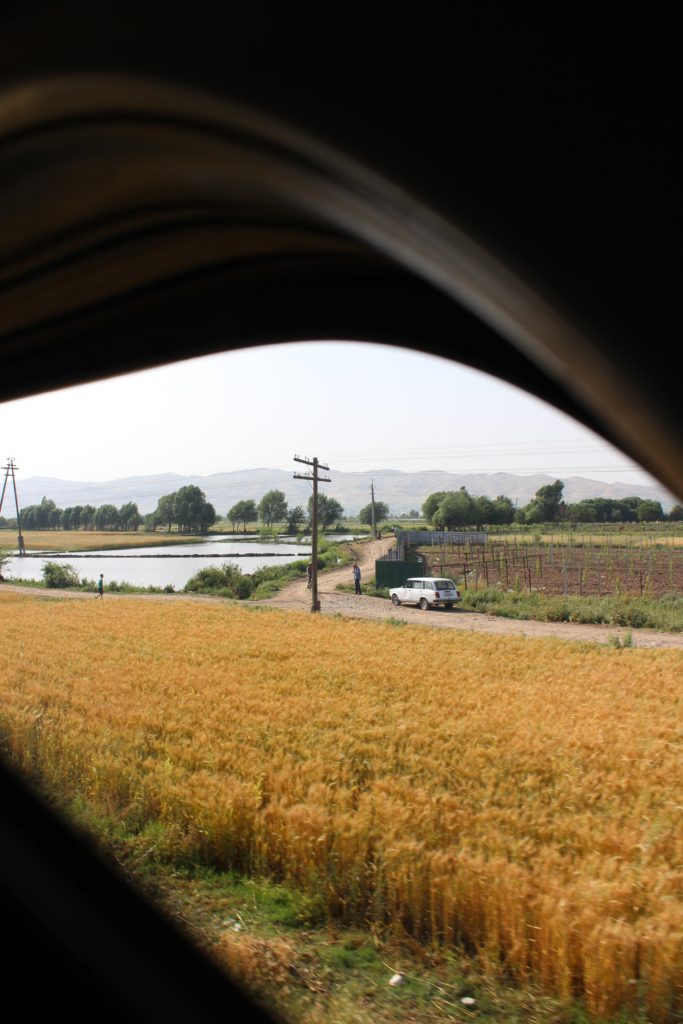
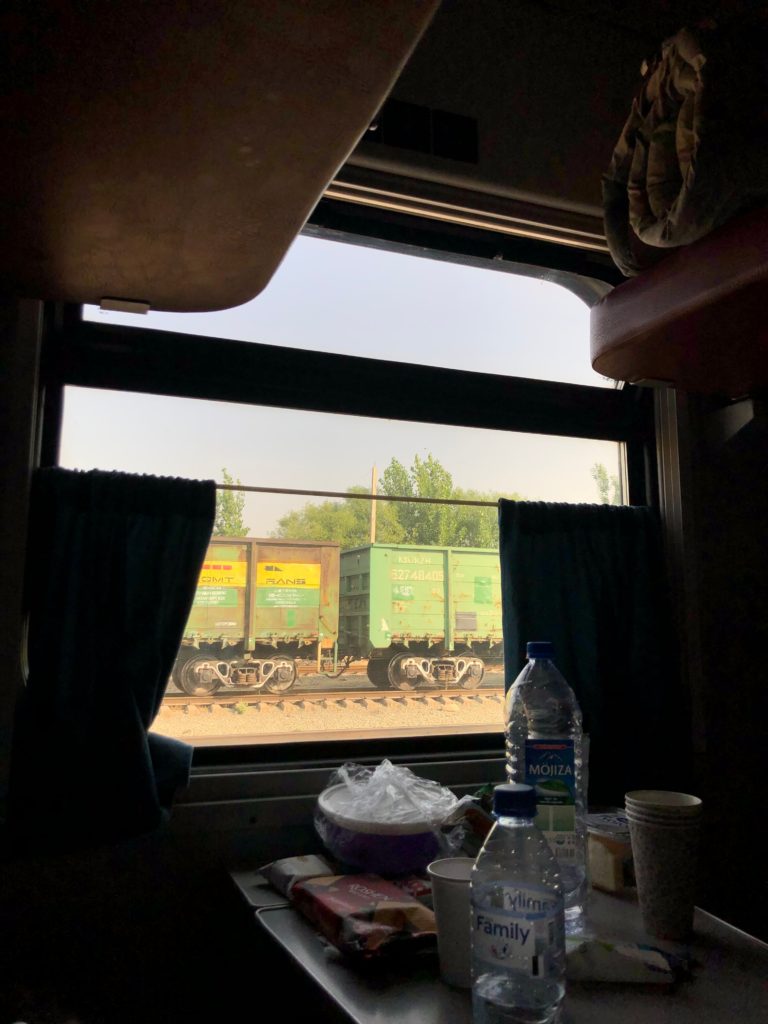
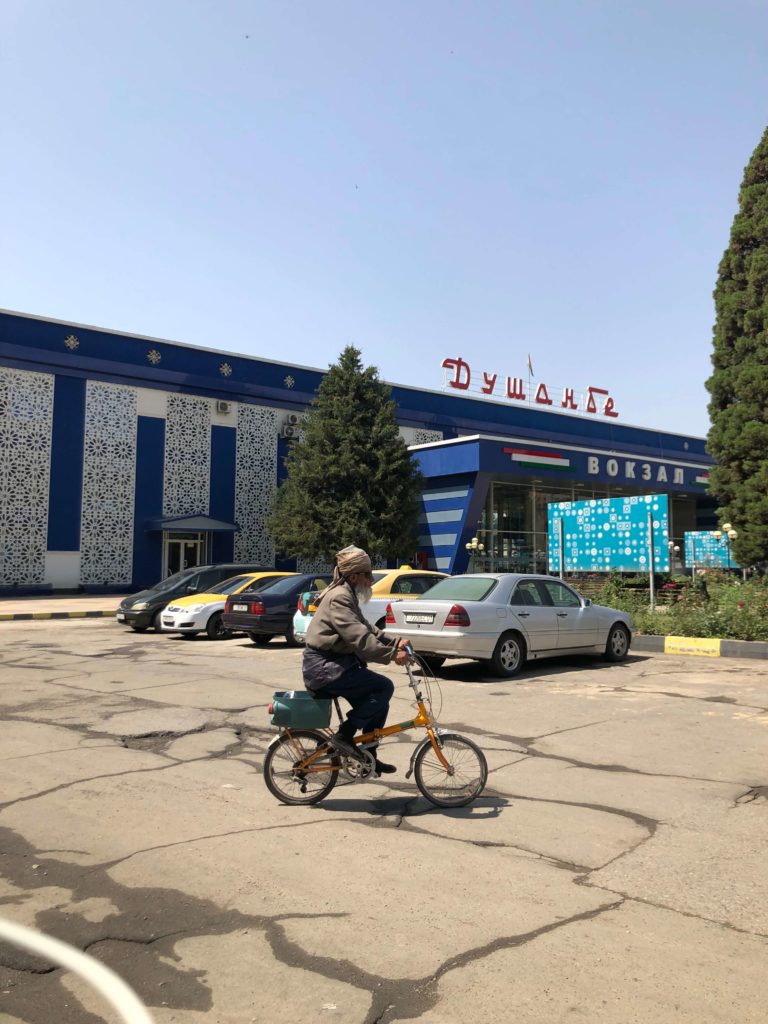
But it might take some time before this treaty will bear fruit. For now, Dushanbe is all but a regional transport hub. The railway station of Tajikistan’s capital city has the allure of that of a provincial town. Aside from the Tashkent-Dushanbe night train, the only other international connection that departs from here is the weekly ride to Volgograd – often packed with Tajik migrant workers heading to Russia.
On the platform, we part ways with Nodira. Although we thoroughly enjoyed the journey, she is of a different opinion. With a small child, the train ride is much more comfortable than the shorter but mountainous route by road. However, the train takes twice as long to travel between the two capitals. Regional transport links still have a long way to go. Nodira concludes that she might as well take the car next time.
Written by Julian Postulart, editor of Novastan English
For more news and analysis from Central Asia, follow us on Twitter, Facebook, Telegram, Linkedin or Instagram.
 Night train to Dushanbe – a travelogue of Uzbek-Tajik relations
Night train to Dushanbe – a travelogue of Uzbek-Tajik relations 
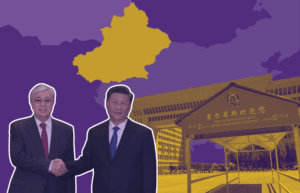

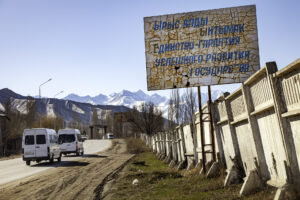
Tom, 2025-04-27
Very informative. Where can I find a timetable for this night train.
Reply